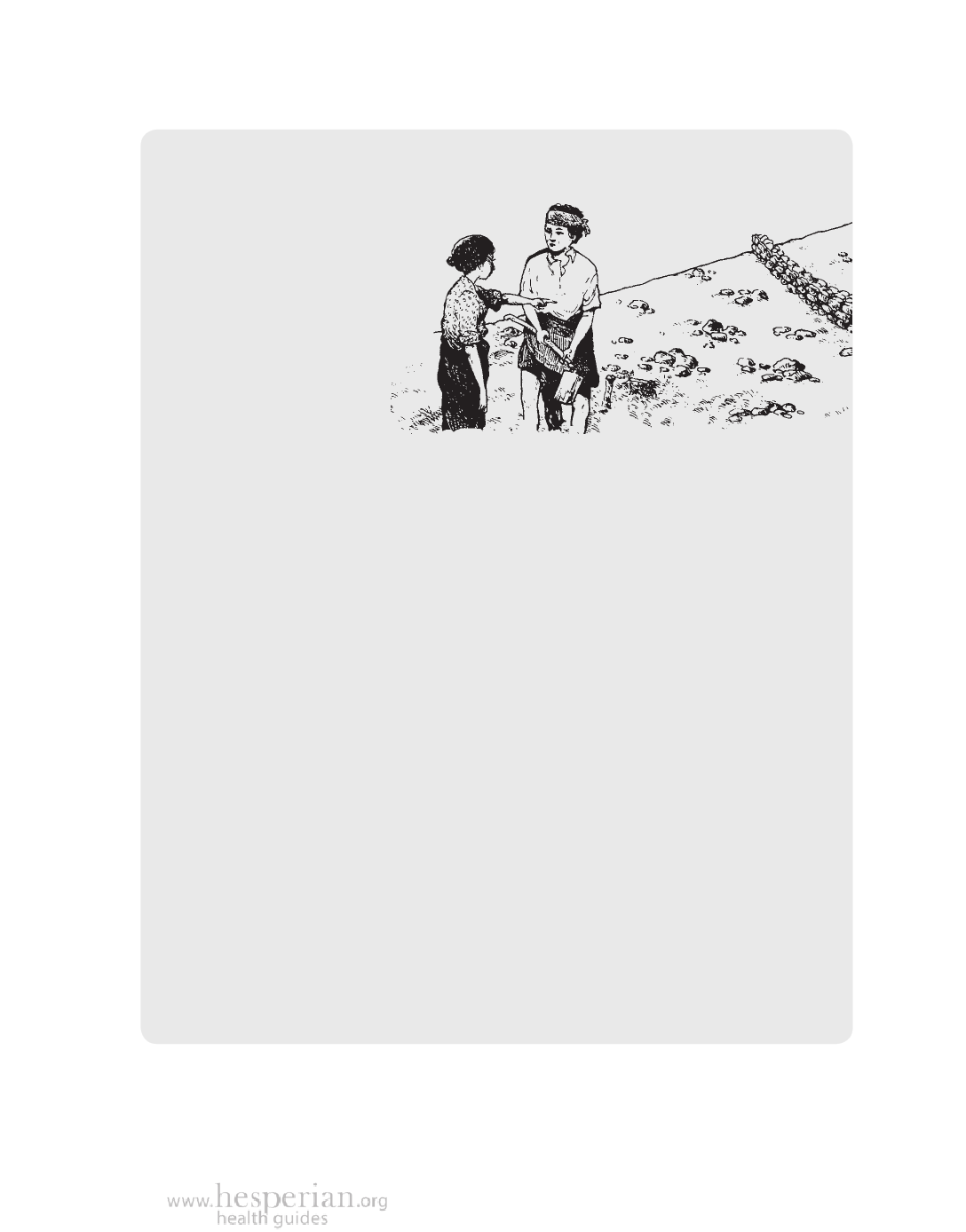
Preventing Erosion 201
NGO workers learn about erosion from farmers
In the Gulbarga District of
Karnataka, India, an NGO
worked with farmers to
prevent soil erosion in their
fields. Farmers traditionally
built high stone barriers
that collected most of the
soil but had openings
below to let water
through, even when the
monsoons came.
The NGO workers noticed that the farmers’ stone barriers allowed some soil
to be lost to the fields below. And when high stone barriers were built at the
lower edges of the field, some of the stones toppled over and had to be collected
from below and replaced. They proposed building solid stone barriers that
would stop all the soil loss and would not need constant repairs.
The farmers said they did not mind replacing a few stones. But the NGO
workers could not understand this. The farmers’ stone barriers took more work
to build and they let soil through, failing to control erosion completely.
They proposed an experiment. In some fields they would build solid, low stone
walls. In others the farmers would build the traditional barriers.
At the end of the season, the farmers and the NGO workers met and
compared the effects. Many farmers with fields below the new, solid walls
were unhappy. Cattle wandered across the low walls onto their fields, and
after the monsoons, these farmers had less new soil and less water for rice
paddies than before.
These problems led to arguments between the owners of the lower fields
and the fields above. The experiment showed the farmers that their own
traditional barriers worked better than the “improved” walls. The farmers
told the NGO workers that the solid stone walls caused too many problems.
Through this experience the NGO workers learned that the farmers’ traditional
barriers not only prevented soil erosion, they also prevented cattle from
straying. Allowing some soil and water through prevented good neighbor
relations from eroding, which was more important to the farmers than a little
extra work!
A Community Guide to Environmental Health 2012